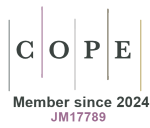Evaluation of the use of Floseal®, a topical hemostatic agent, in cardiothoracic surgery
DOI:
https://doi.org/10.33393/grhta.2020.695Keywords:
Cardiac surgery, Economic impact, Floseal®, Flowable hemostatic matrixAbstract
Introduction: Achieving haemostasis is critical in surgical procedures. Surgical bleeding is associated with an increased risk of mortality and morbidity with consequences at both clinical and organizational level, and with significant economic implications. In addition to conventional methods for controlling intraoperative bleeding, many topical adjunctive hemostatic products are available; among them Floseal® (Baxter Healthcare Corporation), a gelatin-based hemostatic matrix.
The aim of this study is to provide an updated systematic literature review of Floseal® in cardiac surgery and estimate its associated economic impact in an Italian hospital.
Methods: A literature search was conducted in MEDLINE and the Cochrane Library over the period 2013-2016 to identify new publications related to Floseal® in cardiac surgery, in addition to those already included in the systematic review of Echave et al. Furthermore, we investigated the economic impact of the use of Floseal® adapting the model elaborated by Tackett et al. to the Italian NHS. Four new studies were selected.
Results: High variability in surgical procedures, choice of hemostatic products compared to Floseal® and outcome definition is confirmed. Clinical, organizational, and economics endpoints were investigated. A cost-consequence analysis estimated relevant savings. A scenario analysis, despite showing a high variability in patient level savings (€ 441-2.831), confirmed economic advantages associated with Floseal®.
Discussion: Results support prior research both in terms of heterogeneity of evidence on the effectiveness of Floseal® in cardiac surgery and cost implications. The use of Floseal® achieves substantial cost savings in a hypothetical Italian hospital with a cardiac surgery unit.
References
- Stokes ME, Ye X, Shah M et al. Impact of bleeding-related complications and/or blood product transfusions on hospital costs in inpatient surgical patients. BMC Health Serv Res. 2011 May 31;11:135.
- Spotnitz WD, Burks S. State-of-the-art review: hemostats, sealants, and adhesives II: update as well as how and when to use the components of the surgical toolbox. Clin Appl Thromb Hemost. 2010 Oct;16(5):497-514.
- Vyas KS, Saha SP. Comparison of hemostatic agents used in vascular surgery. Expert Opin Biol Ther. 2013 Dec;13(12):1663-72.
- Bracey A, Shander A, Aronson S et al. The use of topical hemostatic agents in cardiothoracic surgery. Ann Thorac Surg. 2017 Jul;104(1):353-60.
- Echave M, Oyagüez I, Casado MA. Use of Floseal®, a human gelatine-thrombin matrix sealant, in surgery: a systematic review. BMC Surg. 2014 Dec 20;14:111.
- Tackett SM, Calcaterra D, Magee G, Lattouf OM. Real-world outcomes of hemostatic matrices in cardiac surgery. J Cardiothorac Vasc Anesth. 2014 Dec;28(6):1558-65.
- Tackett SM, Sugarman R, Kreuwel HT et al. Hospital economic impact from hemostatic matrix usage in cardiac surgery. J Med Econ. 2014 Sep;17(9):670-6.
- Nasso G, Piancone F, Bonifazi R et al. Prospective, randomized clinical trial of the FloSeal matrix sealant in cardiac surgery. Ann Thorac Surg. 2009 Nov; 88(5):1520-6.
- Krishnan S, Conner TM, Leslie R et al. Choice of hemostatic agent and hospital length of stay in cardiovascular surgery. Semin Cardiothorac Vasc Anest. 2009 Dec;13(4):225-30.
- Società Italiana di Chirurgia Cardiaca. Elenco delle Strutture Cardiochirurgiche. https://www.sicch.it/strutture-cardiochirurgiche
- Brouwers C, Hooftman B, Vonk S et al. Benchmarking the use of blood products in cardiac surgery to stimulate awareness of transfusion behaviour: results from a four-year longitudinal study. Neth Heart J. 2017 Mar;25(3):207-14.
- Network Italiano Sanitario (N.I.San.). Costi standard, la proposta N.I.San: 579 dati aggregati per DRG e per tipo di ricovero elaborati da 22 aziende sanitarie pubbliche e private sul biennio 2011-2012. Il Sole 24 Ore Sanità, 18-24 novembre 2014.
- Berti E, Fortuna D, Bartoli S et al. I costi di ricovero e follow-up delle procedure di sostituzione valvolare aortica per via percutanea e cardiochirurgica a confronto: analisi secondo le prospettive del Sistema Sanitario Regionale e dell’Ospedale. G Ital Cardiol. 2016;17(12 Suppl 1):22S-30S.
- Ruscitti G. Tutti i costi delle trasfusioni. Il Sole 24 Ore Sanità,1-7 luglio 2008.
- Shander A, Hofmann A, Ozawa S et al. Activity-based costs of blood transfusions in surgical patients at four hospitals. Transfusion. 2010 Apr;50(4):753-65.
- Makhija D, Rock M, Xiong Y et al. Cost-consequence analysis of different active flowable hemostatic matrices in cardiac surgical procedures. J Med Econ. 2017 Jun;20(6):565-73.
- Joshi MR, Latham J, Okorogheye G. Use of a flowable haemostat versus an oxidised regenerated cellulose agent in primary elective cardiac surgery: economic impact from a UK healthcare perspective. J Cardiothorac Surg. 2017 Nov 29;12(1):107.
- Wagner WR, Pachence JM, Ristich J, Johnson PC. Comparative in vitro analysis of topical hemostatic agents. J Surg Res. 1996 Dec;66(2):100-8.










